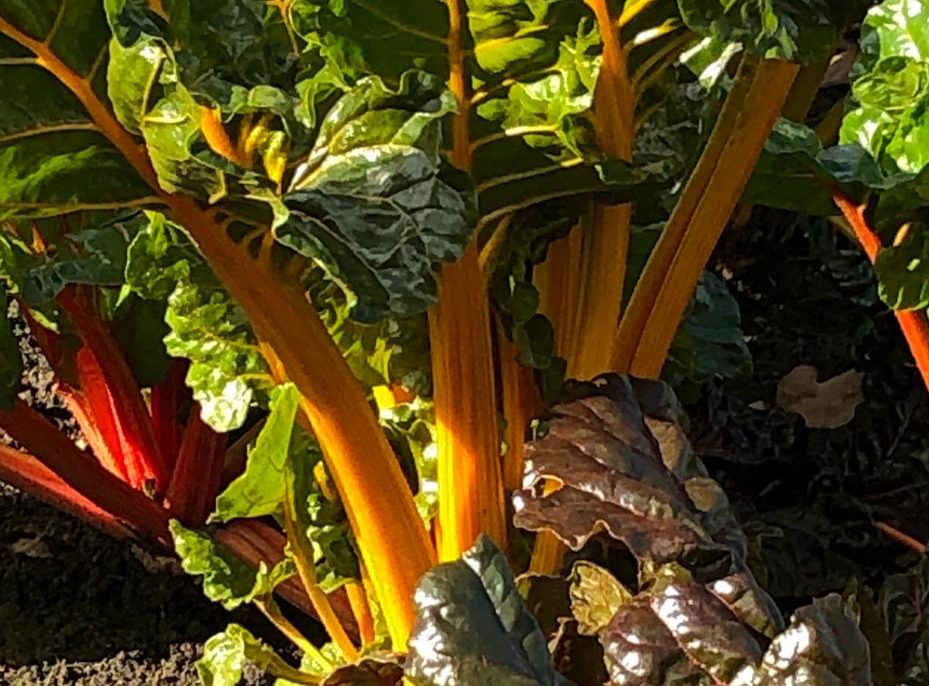
Let’s turn now to some lovely leafy veg! Swiss chard, kale and spinach leaves are delicious and full of vitamins, whether cooked/steamed for stir-fries and the like, or eaten in salads when very young and fresh.
You can sow seeds of kale and chard throughout the spring and summer, and with a bit of protection, late-sown seedlings may even keep producing leaves for you through the winter – if you can keep the pesky birds off them! Easy and attractive in pots, window-boxes and the flower-garden as well as in the veg plot, they are definitely worth having a go at!
1. Types to Grow
Lots of these kinds of veg plants are very pretty! There is a variety of chard called ‘Bright Lights’ and the plants have a rainbow of stem-colours – red, yellow, orange, pink…… .
‘Ruby Chard’ has glowing red stems and green leaves, ‘Peppermint’ has two-toned pink and white stems……….They are definitely the thing to grow if you want your pots to be beautiful as well as productive. ‘Dwarf Green Curled’ is a good variety of kale for a windy spot like a balcony. The kale ‘Nero di Toscana’ with its big slate-coloured crinkled leaves looks and tastes amazing, though can be a bit of a diva, I find.
Spinach is a little bit trickier than chard or kale, at least for me – more prone to ‘bolting’ (shooting up to flower and thus spoiling the taste of the leaves), a fungal disease called ‘downy mildew’ etc. Something called ‘Spinach Beet’ is easier for beginners, I would say, which has not quite such a delicate flavour, but is less finicky in its habits.
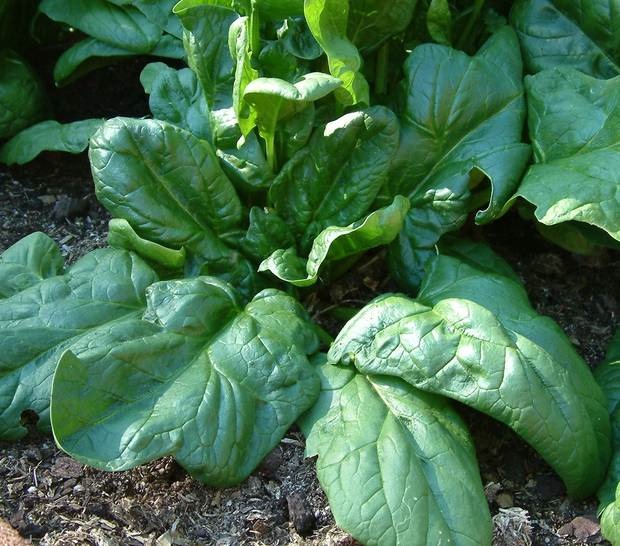
2. Seed-Sowing
These plants are tougher than a lot of annual veg. You can sow the seeds from now onwards into rows outside, pots of compost etc. one inch (2.5 cm) deep and 2-3″ (5-8cm) apart. Sun or slight shade is good. I use a bamboo cane along the row to make a very shallow trench. If you have more than one row, the rows should be about 1′ (30 cm) apart. Cover over the seed, water gently and make a mental note to sow a few more seeds in three weeks’ time.
3. Looking After the Plants
Once the little seedlings are coming up, you must ‘thin’ them out, pulling some out to leave the strongest to grow at least 8″ (20 cm) apart – a foot (30cm) if you want bigger plants that have less competition from their neighbours.
Mildew which manifests itself as white felty bits on the leaves and can cause the plants to collapse is a bit of a pain sometimes – don’t grow the plants too close together, and try to water the soil around them, rather than on top of them.
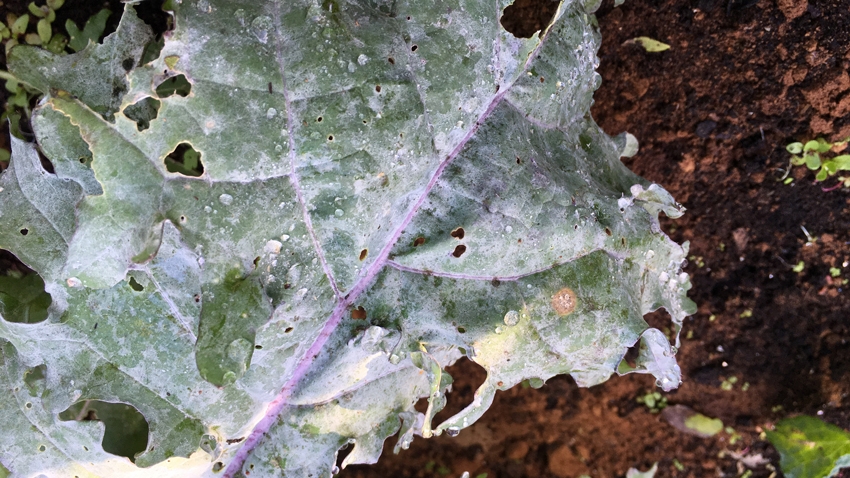
I’m sorry to say that these plants are part of the ‘brassica’ family, and as such, are deeply appealing to to marauding birds, especially pigeons. Protect them with netting, etc. or any way you can think of – good luck!
Keep the soil free of weeds and moist but not drenched. Since we want leaves and not fruit from these plants, a plant-feed containing more nitrogen rather than more potash, would be a great thing to water on the soil around them every 2-3 weeks, if you have such a thing. (I’ll leave all the deeply-science-y stuff to Laura – all we really need to know is that tomato fertiliser, for instance, is packed with potash to help plants flower and therefore, fruit.)
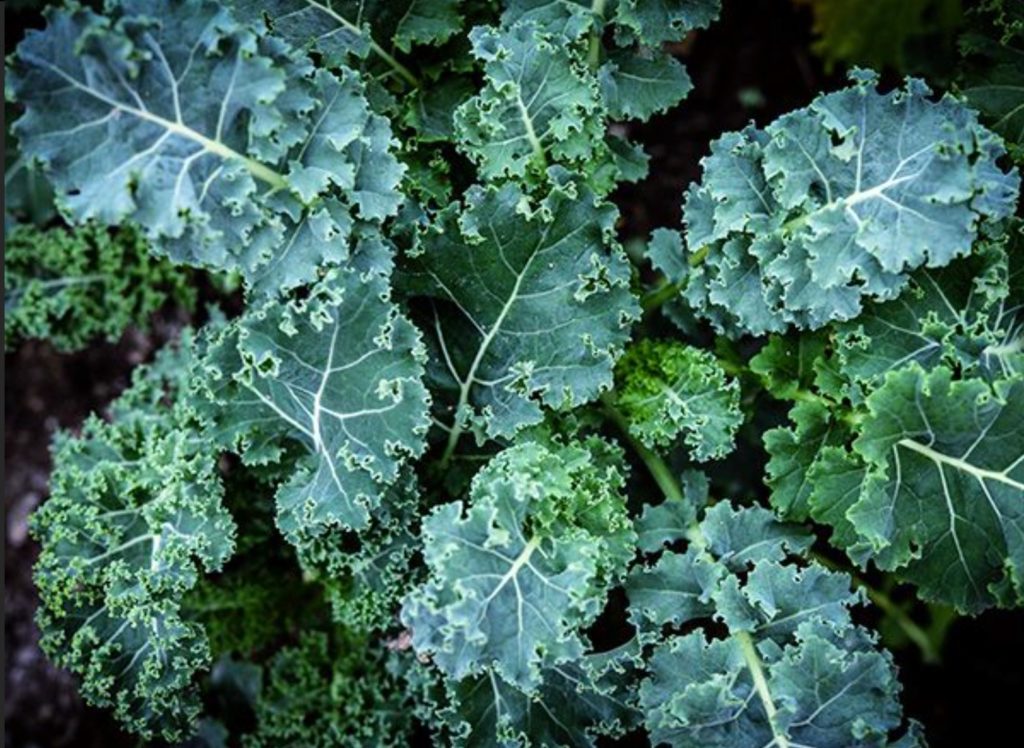
If the plants become stressed in any way, they may ‘bolt’, so try to keep them evenly moist, weeded and happy. The weather can play a big part in this too. If they do start shooting up to flower, thus turning the foliage bitter and inedible, quickly dig up the whole plant and harvest what you can. At least you were very sensible and sowed more seeds a bit later, which will be absolutely FINE! (Hope is a marvellous thing – it’s something most gardeners are very good at……………….)
4. Harvesting

As they grow, you can take off young fresh leaves from the outside of the plant for salads. They won’t reach their full size until about three months after they were sown, but you can always take off a few to eat on the way. Cutting off individual leaves from the edge will prompt the plant to produce more of them in the middle – just the ticket.
One last thing – if you do want to grow chard and kale over the winter from September-sown seed, they will need a bit of protection (a greenhouse or a cloche, poly tunnel, horticultural fleece blanket, cosy mulch round the roots, closed cold frame, etc.) against the worst of the cold. Plants sown in July or August can be dug up carefully and grown on in a glassed-in entrance porch, perhaps?
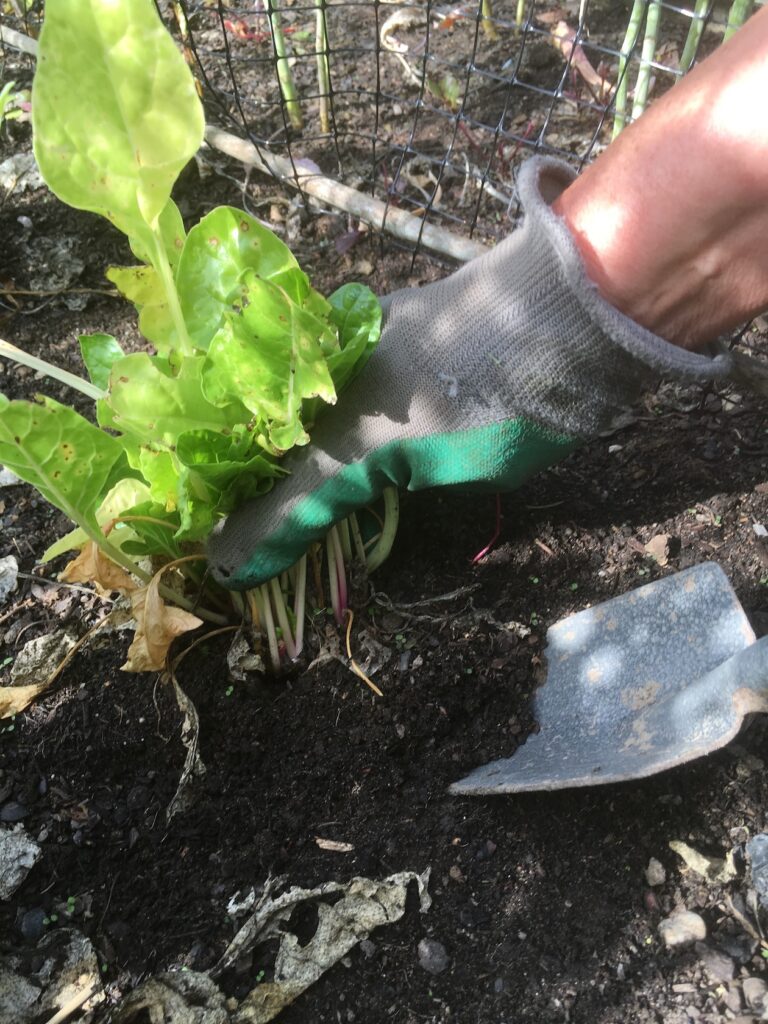
They may stop growing in the depths of winter, and get going again next spring if they are feeling looked-after enough……. and protected from the bloomin’ pigeons!
I am lucky enough to be married to someone who knows what to do with the likes of chard and kale in the kitchen – and has immediately gone into raptures about creating pretty dishes by sautée-ing it with a Gruyere sauce, or steaming it and adding crispy bacon and butter, or with a gratin of breadcrumbs and grated cheese – all sounds nutritious and delicious to me…………
If you missed the first nine posts in our Beginners Veg series, you can read them here:
3. Broad beans
5. Dwarf runner beans, peas and carrots
6.You say tomatoes – I say terrific
7. Salad crops
9. Winter veg – why you need a PLAN
You can have the whole DigYourOwnaForCorona veg growing campaign at your fingertips by getting this, our handy pocket-sized book at our online shop here.
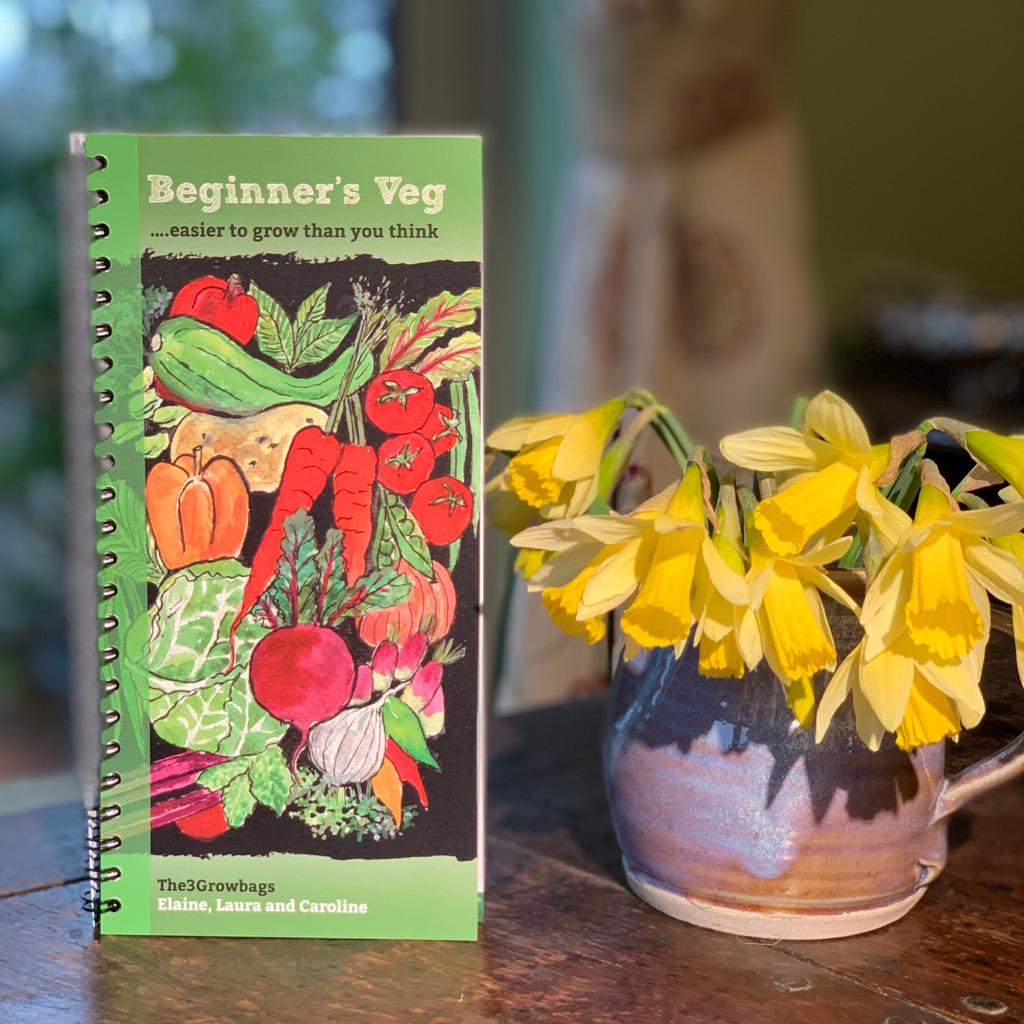
NB: If you’re new to The3Growbags, we are three sisters (Laura, Caroline and me, Elaine) who write about gardening once a week and enjoy a good laugh.
